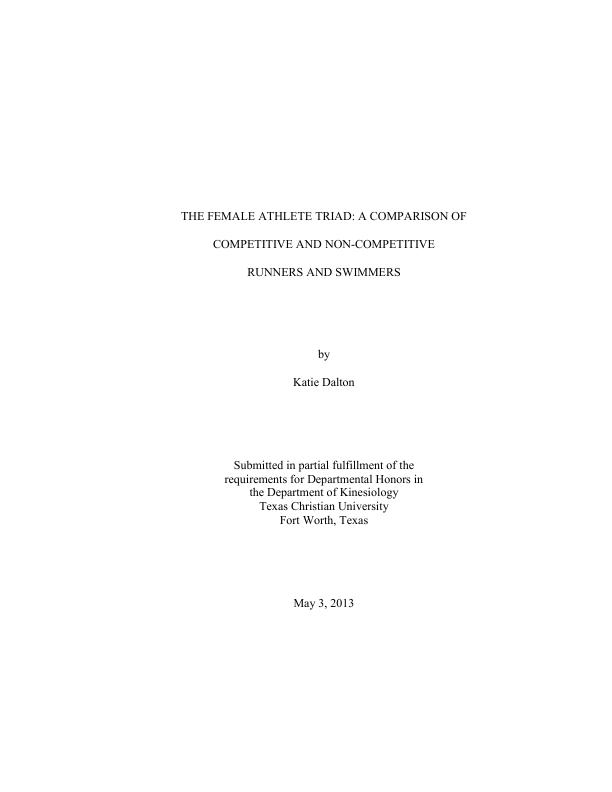The Female Athlete Triad: A Comparison of Competitive and Non-competitive Runners and SwimmersShow full item record
| Title | The Female Athlete Triad: A Comparison of Competitive and Non-competitive Runners and Swimmers |
|---|---|
| Author | Dalton, Katie |
| Date | 2013 |
| Abstract | The female athlete triad (F.A.T) consists of disordered eating, amenorrhea, and osteoporosis (American College of Sports Medicine, 1997). The findings of Thompson and Gabriel (2004) emphasize that this triad is prevalent in all female exercisers and not solely athletes. The purpose of this study was to examine the three F.A.T. components in competitive and non-competitive swimmers and runners. Twenty-one women were recruited, and were divided into either non-competitive runners & swimmers (NR & NS) or competitive runners & swimmers (CR & CS). Participants completed the Eating Disorder Examination Questionnaire (EDE-Q 6.0) and a questionnaire about nutrition and osteoporosis knowledge, injury history, and menstrual function. A dual energy x-ray absorptiometry (DEXA) test also measured the participants' bone mineral density (BMD) and body composition. Swimmers overall reported lower leg BMD than runners (1.109 + 0.125 vs. 1.158+ 0.108 g/cm2). Competitive athletes reported more menstrual dysfunction (7.0 + 5.099 vs. 11.2 + 1.1687 cycles/yr). The small sample size (n=21) was a limitation to finding more significant data but some trends were also found. Overall, competitive athletes showed greater risk for the F.A.T. than their non-competitive peers because the greater training load may have interfered with optimal bone metabolism. |
| Link | https://repository.tcu.edu/handle/116099117/7267 |
| Department | Kinesiology |
| Advisor | Mitchell, Joel |
| Additional Date(s) | 2013-05-03 |
Files in this item
This item appears in the following Collection(s)
- Undergraduate Honors Papers [1362]
© TCU Library 2015 | Contact Special Collections |
HTML Sitemap



